How about a tip of the cap to the index fund?
At a time when prices on just about everything seem to be going up, index funds not only remain a source of stable low costs—they keep driving prices lower. Indeed, index mutual funds and ETFs have been a disinflationary agent for literally decades, pushing down the cost of investing for regular Joes and Janes who just want to build a little wealth for themselves.
Schwab’s index mutual funds go one step further. In addition to some of the lowest expenses you’ll find, Schwab keeps it cheap in one way most mutual fund providers don’t: investment minimums. You see, even funds with extremely low expense fees can sometimes require an initial investment in the thousands of dollars. That’s a high barrier to entry for people with low liquid assets, or just low assets altogether. But in most cases, all it takes to get started in a Schwab mutual fund is just one buck.
The ideal combination, of course, is low fees, low starting costs, and high quality. And like with any other provider, some Schwab funds are better than others. So today, I’m going to introduce you to some of the best Schwab index funds you can buy—a group of core and satellite holdings that can each be purchased for a song.
Disclaimer: This article does not constitute individualized investment advice. These securities appear for your consideration and not as personalized investment recommendations. Act at your own discretion.
Editor’s Note: Tabular data presented in this article are up-to-date as of Oct. 31, 2024.
Table of Contents
Why Schwab?
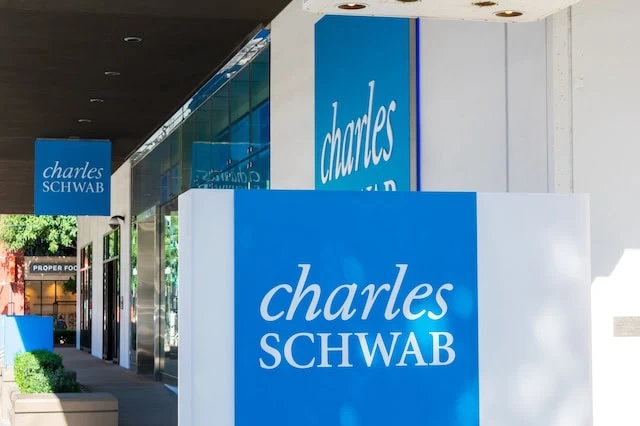
Charles Schwab is the largest publicly traded investment services firm with more than $6 trillion in assets under management (AUM). And it offers a wide range of financial services, such as investment advice and management, trading services, financial planning, banking services, workplace and individual retirement plans, annuities, and more.
It also offers very low-cost and extremely low-minimum mutual funds. Annual expenses on its mutual funds are well below the industry average. And Schwab really stands out from a nominal-expense perspective. Many providers’ mutual funds require minimum initial investments in the thousands of dollars. But most Schwab mutual funds require a mere $1—an ideal situation for investors who don’t have much capital to put to work.
In short: Schwab offers a nice variety of mutual funds, some of which are among the best on the market, and they won’t leave your wallet in tatters.
Why Index Funds?
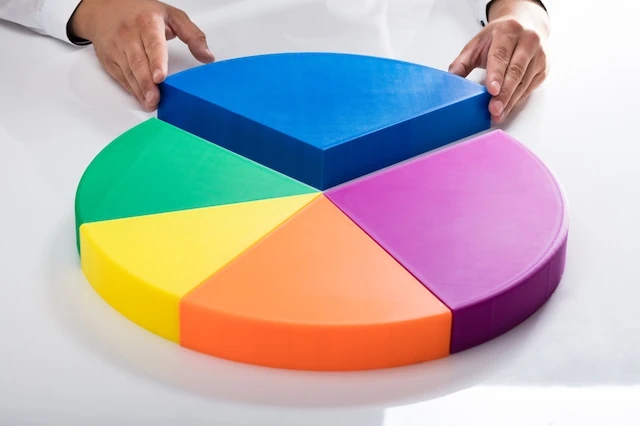
For most of their history, investment funds (like mutual funds) were entirely run by human managers, who would research, select, buy, and sell securities on the fund’s behalf.
That changed in the mid-1970s with the advent of the index fund.
An index fund’s portfolio selections are guided by a simple benchmark (an index, which is governed by certain predetermined rules) to meet some sort of strategic goal. That goal might be as broad as merely holding all the stocks in a popular stock-market benchmark like the S&P 500 or Dow Jones Industrial Average. Or it might be holding only below-investment-grade bonds issued by chip and cookie makers in the Asia-Pacific.
While I don’t recommend buying my hypothetical APAC Junk Food Index Fund, I do recommend buying index funds in general, for a few reasons.
They’re typically cheaper. An actively managed index fund has one or more managers, all of whom need to be paid. An index fund technically has a manager overseeing the fund, but they’re not performing stock research and deciding on trades—the index’s rules determine those actions. Thus, fund providers can afford to charge (often much) lower expenses on index funds.
Index funds tend to perform well, too, compared to comparable actively managed funds. I’ll provide a pretty stark example later, but just know that human managers often struggle to beat the benchmark indexes. So, if you have a fund that cheaply tracks a benchmark index, and many human managers can’t even beat that benchmark index … that index fund starts to look awfully good.
Also worth noting? Turnover—how much the fund tends to buy and sell holdings—is often extremely low in index funds, as only a handful of holdings tend to enter or leave the underlying index in a given year. As a result, they typically make little to no capital gains distributions at the end of the year. The Schwab funds I’m about to detail all sport minimal turnover, which makes them very tax-efficient investments for taxable brokerage accounts.
How Were the Best Schwab Index Funds Selected?

Unlike other mutual fund giants, Schwab’s assets are concentrated in a tight roster of just a few dozen mutual funds. So, investors sorting through Schwab’s index mutual funds won’t have nearly as bad a case of analysis paralysis.
Still, a little filtering is necessary to get us down to a more manageable list. So I’ve started with a quality screen, including only Schwab index funds that have earned a Morningstar Medalist rating.
Unlike Morningstar’s Star ratings, which are based upon past performance, Morningstar Medalist ratings are a forward-looking analytical view of a fund. Per Morningstar:
“For actively managed funds, the top three ratings of Gold, Silver, and Bronze all indicate that our analysts expect the rated investment vehicle to produce positive alpha relative to its Morningstar Category index over the long term, meaning a period of at least five years. For passive strategies, the same ratings indicate that we expect the fund to deliver alpha relative to its Morningstar Category index that is above the lesser of the category median or zero over the long term.”
As I’ve written in other Young and the Invested articles, a Medalist rating doesn’t mean Morningstar is necessarily bullish on the underlying asset class or categorization. It’s merely an expression of confidence in the fund compared to its peers.
From the remaining universe of funds, I selected a range of products that invest in various core and satellite strategies, with a distinct focus on the absolute lowest annual expenses. To be fair, the overall best Schwab funds to buy are pretty cheap in their own right, and include a couple funds from this list. But here, no fund charges more than 0.06%, or 60¢ annually on a $1,000 investment—and most of the index funds here charge even less than that.
The Best Schwab Index Funds to Buy
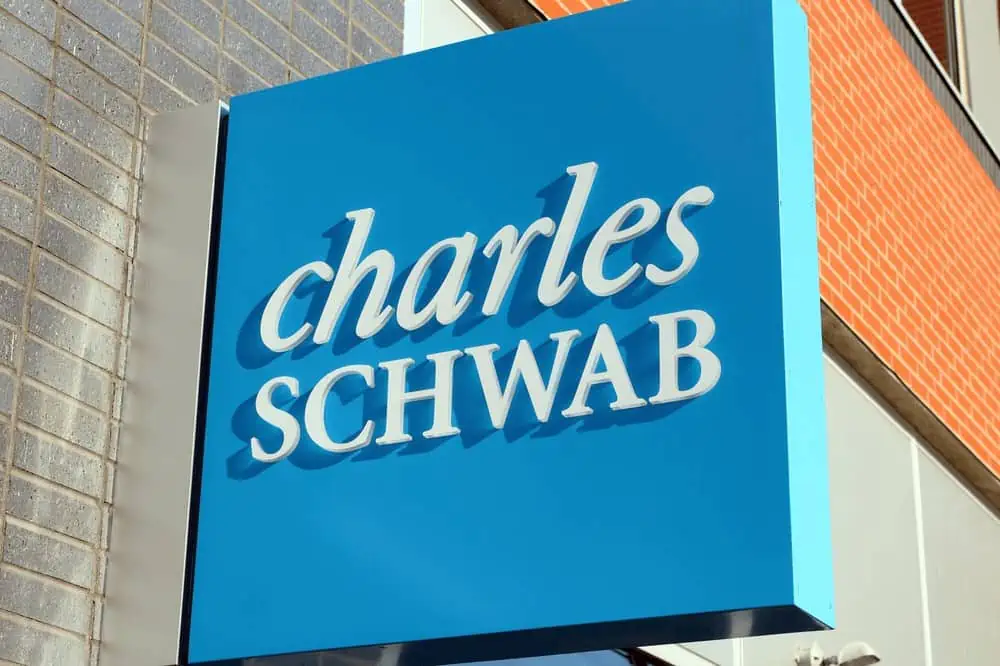
Below are some great Schwab index mutual funds—most of which one would consider core holdings, though a couple are better used as satellite positions to help you either generate a little more alpha or get more defensive.
And good news: Indexing is where Schwab excels. Its highest-rated funds are all indexed products, so you’re getting an ideal combination of high quality and very, very low costs.
And every Schwab fund on this list has a minimum initial investment of just $1. Typically, when I’m writing about mutual funds, I try to also list ETF share classes or equivalent ETFs for investors who might have less capital to put to work. But in this case, there’s no need—even if your liquidity is limited to a single greenback, you’ve got enough to get started.
1. Schwab S&P 500 Index Fund
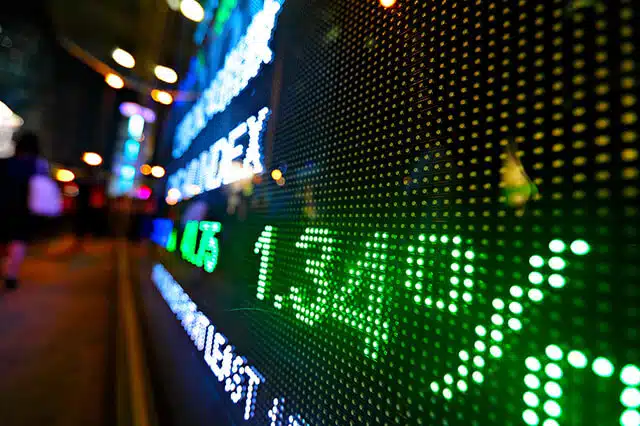
— Style: U.S. large-cap stock
— Assets under management: $108.3 billion
— Expense ratio: 0.02%, or 20¢ per year for every $1,000 invested
— Dividend yield: 1.2%
— Morningstar Medalist rating: Gold
The majority of fund managers who run large-cap funds (funds that invest in larger companies) struggle to consistently beat the S&P 500 Index, particularly after fees. According to S&P Dow Jones Indices, “60% of all active large-cap U.S. equity funds underperformed the S&P 500.” That’s no anomaly: Thanks to yet another 365 days of lagging in 2023, the majority of active managers have now failed to beat the S&P 500 in 21 of the past 24 years.
As I typically say when confronted with an S&P 500 fund: If you can’t beat it, join it.
Related: The 7 Best Vanguard Index Funds for Beginners
The Schwab S&P 500 Index Fund (SWPPX) isn’t just a cheap way to get access to the S&P 500—it’s one of the cheapest ways across both mutual funds and ETFs alike, charging a razor-thin expense ratio of just 0.02%. That’s not free, but it’s mighty close.
The S&P 500 is a collection of some of the largest American companies, but to be clear, it’s not automatically the 500 largest American companies. Among criteria for this index: A company must have a market capitalization of at least $18.0 billion, its shares must be highly liquid (shares are frequently bought and sold), and at least 50% of its outstanding shares must be available for public trading. Where you start to weed out a few large companies is that, for inclusion, a company must also have positive earnings in the most recent quarter, and the sum of its previous four quarters must be positive.
Note: Once a company becomes an S&P 500 component, it’s not automatically kicked out if it fails to meet all of the criteria. However, the selection committee would take this under consideration and possibly boot the company.
Related: 7 Best Schwab ETFs to Buy [Build Your Core for Cheap]
The S&P 500 is considered a reflection of the U.S. economy—but that doesn’t mean all industries are represented equally. For instance, the technology sector accounts for nearly 30% of SWPPX’s assets. Real estate, materials, and utilities merit less than 3% apiece. This is in no small part because, like many indexes, the S&P 500 is market capitalization-weighted, which means the greater the size of the company, the more “weight” it’s given in the index. Currently, trillion-dollar-plus companies Microsoft (MSFT), Apple (AAPL), and Nvidia (NVDA) rank among Schwab S&P 500 Index Fund’s top holdings.
Turnover (how much the fund tends to buy and sell holdings) tends to be low, as only a handful of stocks enter or leave the index in any given year. That greatly minimizes (and in some years, eliminates) capital-gains distributions, which receive unfavorable tax treatment. This makes SWPPX an extremely tax-efficient option for taxable brokerage accounts.
A combination of the S&P 500’s excellence as an index, as well as SWPPX’s bare-bones costs and tax-efficiency, merit a Gold Medalist rating from Morningstar. It’s just one of three Schwab products to earn that coveted ranking, making it easily one of the best Schwab index funds you can buy.
Related: 9 Monthly Dividend Stocks for Frequent, Regular Income
2. Schwab US Large-Cap Growth Index Fund

— Style: U.S. large-cap growth stock
— Assets under management: $3.0 billion
— Expense ratio: 0.035%, or 35¢ per year for every $1,000 invested
— Dividend yield: 0.5%
— Morningstar Medalist rating: Silver
The stock market can be sliced in any number of ways, but one of the broadest and most commonly used categorizations is growth vs. value.
Generally speaking, growth stocks are expected to produce higher-than-average growth—typically in metrics like revenues and profits—which should lead to better-than-average stock performance. Meanwhile, value stocks are considered to be underappreciated by investors based on metrics such as price-to-earnings (P/E) or price-to-sales (P/S), among others. The idea is that once the market gets wise, they’ll buy up shares, driving the stock’s price higher as it reaches a fairer value. (These stocks also are more likely to pay dividends.) It’s not a perfect dichotomy—some stocks can both have growth characteristics and be undervalued, and some stocks can be neither growthy nor underpriced. But growth and value are nonetheless two primary “stock types” that investors tend to gravitate toward.
Investors who would like to stuff their portfolio with growth stocks can do so through the Schwab US Large-Cap Growth Index Fund (SWLGX). SWLGX tracks the Russell 1000 Growth Index, which consists of any Russell 1000 companies that sport higher I/B/E/S forecast two-year growth, higher five-year historical growth in sales per share, and relatively higher price-to-book (P/B) ratios.
Related: The 7 Best Fidelity Index Funds for Beginners
The index is float-adjusted market cap-weighted. Traditional market cap-weighting accounts for all of a company’s shares—even those that might be privately held and non-transferable. (Owners, directors, and insiders sometimes hold these kinds of shares.) But float-adjusted market cap weighting accounts only for market capitalization based on the “float,” which is shares available for public trading.
The resulting portfolio is a group of 440 or so growth stocks with huge tilts toward mega-cap stocks. Here, Microsoft, Apple, Nvidia, Amazon (AMZN), and the other Magnificent Seven stocks have even higher weightings than they do in the S&P 500. It shouldn’t be a surprise that technology reigns supreme in a growth portfolio—this Schwab index fund currently has nearly 45% of its portfolio locked up in tech stocks. Consumer discretionary and communication services also have double-digit weightings thanks in large part to Amazon and Tesla, and Meta Platforms (META) and Alphabet (GOOGL), respectively.
Just know that like many growth-oriented funds, a richly valued portfolio is table stakes. SWLGX’s P/E, price-to-cash flow (P/CF), and other valuation ratios are all higher than the broader market.
Related: The 7 Best Dividend ETFs [Get Income + Diversify]
3. Schwab US Large-Cap Value Index Fund

— Style: U.S. large-cap value stock
— Assets under management: $791.9 million
— Expense ratio: 0.035%, or 35¢ per year for every $1,000 invested
— Dividend yield: 2.0%
— Morningstar Medalist rating: Silver
On the other side of the coin, we have the Schwab US Large-Cap Value Index Fund (SWLVX).
Schwab’s value index fund addresses value in a strange way, effectively seeking out the inverse of the SWLGX. It tracks the Russell 1000 Value Index, which is made up of Russell 1000 companies with “relatively lower price-to-book ratios, lower I/B/E/S forecast medium term (2 year) growth and lower sales per share historical growth (5 years).”
Related: Best Target Date Funds: Vanguard vs. Schwab vs. Fidelity
In other words, rather than selecting companies by explicitly using valuation metrics, it uses P/B … but otherwise tries to define value through relatively low growth. The use of price-to-book is also odd in and of itself—while very helpful when trying to value capital-intensive businesses (manufacturers, energy companies, banks), but not very useful when trying to value companies with a lot of intangible assets like patents and intellectual property (tech firms). Even more curious? Despite effectively being the inverse of Russell 1000 Growth, which holds 440 of the Russell 1000’s stocks, Russell 1000 Value is made up of nearly 840 of the Russell 1000’s stocks.
These head-scratching facts aside, Schwab US Large-Cap Value Index Fund’s resulting portfolio does end up being value-priced across a range of metrics—not just P/B, but also P/E and P/CF as well. And as you’d expect, the portfolio also sports a much lower average return on equity.
Related: 12 Best Long-Term Stocks to Buy and Hold Forever
SWLVX is much more balanced from a sector perspective, though it still has some high concentrations—currently financials (22%), health care (15%), and industrials (14%). There’s far less single-stock risk, too, with top holdings like Warren Buffett’s Berkshire Hathaway (BRK.B), JPMorgan Chase (JPM), and Exxon Mobil (XOM) sitting around 2% to 3%.
Lastly, this concentration in value stocks also results in a higher-than-average yield. SWLVX currently yields 2.1%, compared to just 1.3% for the S&P 500.
Performance comparisons aren’t really that helpful, though—both funds started in December 2017, and the large-growth fund has rocketed past its value brother, but you can credit a prolonged outperformance from growth stocks in general for that.
Related: 5 Best Schwab Retirement Funds [High Quality, Low Costs]
4. Schwab Small-Cap Index Fund

— Style: U.S. small-cap stock
— Assets under management: $6.9 billion
— Expense ratio: 0.04%, or 40¢ per year for every $1,000 invested
— Dividend yield: 1.4%
— Morningstar Medalist rating: Bronze
Investors wanting potentially more explosive returns than even large-cap growth stocks, and can stomach more risk, might consider small-cap stocks instead.
Smaller companies (usually considered to be those with market capitalizations of $2 billion or less) are generally considered to have more growth potential than larger firms. For one, as they say, it’s much easier to double your revenues from $1 million than $1 billion. And as these stocks become noticed by institutional investors and fund managers, or begin qualifying for certain indexes, they can begin to enjoy large-scale investments that drive their prices even higher.
Related: Best Schwab Retirement Funds for an IRA
But there’s more risk involved. A smaller company’s revenues might be dependent on just one or two products or services—meaning a single disruption could have massive financial consequences. They also have less access to capital than their larger peers, so they’re less likely to get a lifeline should they suffer from broader economic headwinds.
It’s the definition of “high risk, high reward.” However, you can harness some of these firms’ upside potential while tamping down on risk by investing in a small-stock fund like Schwab Small-Cap Index Fund (SWSSX).
SWSSX is a very straightforward index fund that tracks the Russell 2000 Index—largely considered the premier small-cap index. It’s a robust portfolio that’s predominantly invested in small-cap stocks—though there’s a small single-digit weight to some smaller mid-cap companies. The goal with broad small-cap funds is diversified exposure that reduces risk, and that’s exactly what you get here. You’re invested in roughly 2,000 stocks with minimal single-stock exposure. Currently, only one holding—Super Micro Computer (SMCI)—commands more than 1% of assets. That’s because SWSSX is market cap-weighted, and SMCI shares have been on a white-hot run that has pushed the company’s worth well into large-cap territory. As a result, SMCI could actually be removed from the index during the Russell 2000’s reconstitution, which happens every year in late June.
One last note: SWSSX is dirt-cheap and enjoys a decent Medalist rating from Morningstar. But if expenses aren’t your main concern, you might consider the better-rated and better-performing Schwab Fundamental US Small Company Index Fund (SFSNX), detailed in my look at Schwab’s top mutual funds.
Related: How to Get Free Stocks for Signing Up: 8 Apps w/Free Shares
5. Schwab Total Stock Market Index Fund
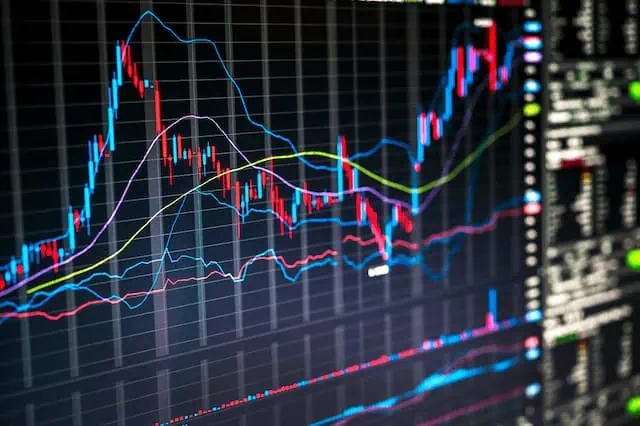
— Style: U.S. all-cap stock
— Assets under management: $26.8 billion
— Expense ratio: 0.03%, or 30¢ per year for every $1,000 invested
— Dividend yield: 1.2%
— Morningstar Medalist rating: Gold
Who says you can’t have it all?
That’s the idea behind total-market funds like the Schwab Total Stock Market Index (SWTSX), which is designed to “track the total return of the entire U.S. stock market.” Now if we’re splitting hairs, even at 3,350 stocks, you’re not actually investing in the “entire U.S. stock market” … but it’s about as close as you’d ever reasonably need to get.
Related: The 7 Best Closed-End Funds (CEFs) That Yield Up to 11%
A total-market fund typically won’t give you equal exposure to all the different stock sizes—they’re typically market cap-weighted, which naturally means they’re heavily tilted toward large caps. And so it is with SWTSX, which currently has 72% of its assets wrapped up in large caps (like with the S&P 500 fund, Microsoft, Apple, and Nvidia are top weights here), 19% in mid-caps, and the remaining 9% in smalls.
The point of a total-market fund like SWTSX is simplicity. One fund gets you exposure to most of the U.S. stock market—and it overloads you in the largest, most stable firms while providing only modest exposure to smaller, more volatile firms. Better still? You can get all this for just 0.03% in annual expenses. It’s a one-two punch of coverage and price that has been recognized with a Morningstar Gold Medalist rating, and inclusion on my list of Schwab’s top index funds.
Related: 5 Best Vanguard Dividend Funds [Low-Cost Income]
How (or whether) you use it is a matter of preference.
If you like the exact breakdown of SWTSX’s large-, mid-, and small-cap exposure, you could make it the core of your portfolio and not have to bother with any other broad U.S. stock funds.
If you like the idea of owning all these different-sized stocks, but would want to do so in different ratios, you could either hold Total Stock Market and augment with Schwab’s large-, mid-, or small-cap funds, or avoid it outright and just buy your ideal mixture of large-, mid-, and small-cap products.
Related: 13 Dividend Kings for Royally Resilient Income
6. Schwab International Index Fund

— Style: International large-cap stock
— Assets under management: $9.9 billion
— Expense ratio: 0.06%, or 60¢ per year for every $1,000 invested
— Dividend yield: 3.1%
— Morningstar Medalist rating: Silver
You’ve probably noticed by now that this list of funds, like many, is loaded with U.S.-centric options. That’s for good reason. U.S. markets have long been among the most productive in the world, and if you believe in the American economy’s ability to keep growing, that should remain the case. Thus, most financial experts here will direct you to gobble up U.S. stock funds.
But those same experts would tell you that it’s worth having at least some international exposure. And you can do that for a song through the Schwab International Index Fund (SWISX).
Related: The 9 Best ETFs for Beginners
Among the best Schwab index funds listed here, SWISX is technically the most expensive—but still a roaring bargain at just 0.06% annually. This measly cost gets you invested in nearly 800 stocks across primarily developed markets in Europe and Asia. Japan is tops at 22% of assets, though you also get double-digit exposure to the U.K., France, and Switzerland.
More than 80% of SWISX’s holdings are large-cap stocks, and top holdings are full of blue-chip multinationals like Swiss foods giant Nestlé (NSRGY), Japanese auto giant Toyota (TM), and Dutch semiconductor firm ASML Holding (ASML). And like with most international funds with a heavy bent toward large firms, SWISX has an outsized dividend yield that’s currently above 3%.
Related: The 9 Best Dividend Stocks for Beginners
Like with Schwab’s small-cap index fund above, Schwab has a more expensive but more productive “fundamental” alternative, the Schwab Fundamental International Large Company Index Fund (SFNNX), that’s worth looking into. It’s not a perfect one-for-one—even though SFNNX has an explicit goal of holding large caps, it ends up actually holding more mid-caps than SWISX—but it’s a better-rated, better-performing fund with similar enough exposure that it’s worth considering.
That said, SWISX is no slouch. If your goal is to invest as cheaply as possible, SWISX provides some of the most inexpensive international coverage you’ll find, and it has historically produced better-than-average returns.
Related: The 7 Best Index Funds for Beginners
7. Schwab US Aggregate Bond Index
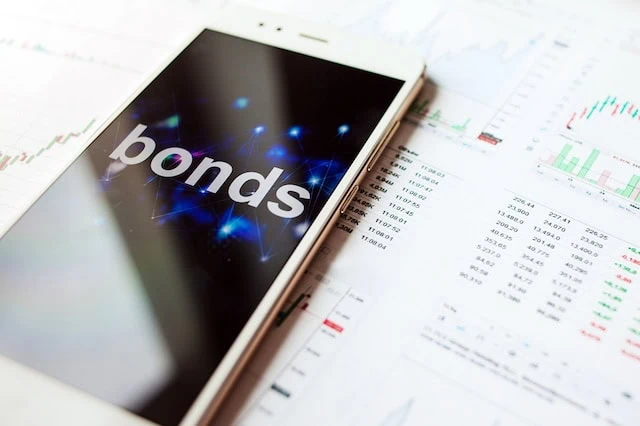
— Style: U.S. intermediate bond
— Assets under management: $5.2 billion
— Expense ratio: 0.04%, or 40¢ per year for every $1,000 invested
— SEC yield: 4.3%*
— Morningstar Medalist rating: Bronze
Most investors need some exposure to bonds, which is debt that’s issued by governments, companies, and other entities. Their interest payments and relative lack of volatility make them an excellent tool for providing a portfolio with stability and income.
How much bond exposure you need will vary by age. They’re not great for generating wealth, which is your prime concern when you’re younger, but they’re outstanding for protecting wealth, which becomes increasingly pivotal as you age. So generally speaking, when you’re younger, you’ll want to be primarily invested in stocks … and as you get older, you’ll want to go lighter on stocks and start buying more bonds.
Related: 11 Best Alternative Investments [Options to Consider]
But you might not want to buy individual bonds. Data and research on individual issues is much thinner than it is for publicly traded stocks. And some bonds have minimum investments in the tens of thousands of dollars. So, your best (and most economical) bet is to buy a bond fund, which allows you to invest in hundreds or even thousands of bonds with a single click.
One of the best Schwab mutual funds you can buy for this access is the Schwab US Aggregate Bond Index Fund (SWAGX), which holds a whopping 9,400 debt issues. At the moment, 42% of the portfolio is in U.S. government bonds, another 27% is in mortgage-backed securities (MBSes), and 25% is in corporate bonds. The rest is peppered around other government-related bonds, municipal bonds, and other debt.
Related: 12 Best Investment Opportunities for Accredited Investors
SWAGX’s maturities range from less than a year to more than 20 years. Meanwhile duration—a measure of interest-rate sensitivity—is 6.2 years, implying that a 1-percentage-point hike in interest rates would result in a 6.2% decline in the fund, and vice versa. In short, this is moderate interest-rate risk, which is perfectly acceptable for a basic core bond holding like this.
* SEC yield reflects the interest earned across the most recent 30-day period. This is a standard measure for funds holding bonds and preferred stocks.
Learn More About These and Other Funds With Morningstar Investor

If you’re buying a fund you plan on holding for years (if not forever), you want to know you’re making the right selection. And Morningstar Investor can help you do that.
Morningstar Investor provides a wealth of information and comparable data points about mutual funds and ETFs—fees, risk, portfolio composition, performance, distributions, and more. Morningstar experts also provide detailed explanations and analysis of many of the funds the site covers.
With Morningstar Investor, you’ll enjoy a wealth of features, including Morningstar Portfolio X-Ray®, stock and fund watchlists, news and commentary, screeners, and more. And you can try it before you buy it. Right now, Morningstar Investor is offering a free seven-day trial. You can check out the current deal, as well as discounted rates for students and teachers, on Morningstar Investor’s website.
What is the Minimum Investment Amount on Schwab Mutual Funds?

Schwab is one of the most friendly fund companies for beginners. That’s not just because both its mutual funds and ETFs sport below-industry-average expense ratios, but because you don’t need much money to invest in them in the first place. Most Schwab mutual funds have a negligible investment minimum—you can literally start with as little as $1.
That’s extremely beneficial in self-directed accounts like an IRA. Many mutual funds from other providers require high minimums in the thousands of dollars, hamstringing investors with little capital to work with.
Why Does a Fund’s Expense Ratio Matter So Much?

Every dollar you pay in expenses is a dollar that comes directly out of your returns. So, it is absolutely in your best interests to keep your expense ratios to an absolute minimum.
The expense ratio is the percentage of your investment lost each year to management fees, trading expenses and other fund expenses. Because index funds are passively managed and don’t have large staffs of portfolio managers and analysts to pay, they tend to have some of the lowest expense ratios of all mutual funds.
This matters because every dollar not lost to expenses is a dollar that is available to grow and compound. And over an investing lifetime, even a half a percent can have a huge impact. If you invest just $1,000 in a fund generating 5% per year after fees, over a 30-year horizon, it will grow to $4,116. However, if you invested $1,000 in the same fund, but it had an additional 50 basis points in fees (so it only generated 4.5% per year in returns), it would grow to only $3,584 over the same period.
Related: 6 Best Stock Recommendation Services [Stock Picking + Tips]

Stock recommendation services are popular shortcuts that help millions of investors make educated decisions without having to spend hours of time doing research. But just like, say, a driving shortcut, the quality of stock recommendations can vary widely—and who you’re willing to listen to largely boils down to track record and trust.
The natural question, then, is “Which services are worth a shot?” We explore some of the best (and best-known) stock recommendation services.
Related: 12 Best Long-Term Stocks to Buy and Hold Forever

As even novice investors probably know, funds—whether they’re mutual funds or exchange-traded funds (ETFs)—are the simplest and easiest ways to invest in the stock market. But the best long-term stocks also offer many investors a way to stay “invested” intellectually—by following companies they believe in. They also provide investors with the potential for outperformance.
So if your’e looking for a starting point for your own portfolio, look no further. Check out our list of the best long-term stocks for buy-and-hold investors.
Related: Best Target-Date Funds: Vanguard vs. Schwab vs. Fidelity

Looking to simplify your retirement investing? Target-date funds are a great way to pick one fund that aligns with when you plan to retire and then contribute to it for life. These are some of the best funds to own for retirement if you don’t want to make any investment decisions on a regular basis.
We provide an overview of how these funds work, who they’re best for, and then compare the offerings of three leading fund providers: Vanguard, Schwab, and Fidelity.
Related: 9 Best Monthly Dividend Stocks for Frequent, Regular Income

The vast majority of American dividend stocks pay regular, reliable payouts—and they do so at a more frequent clip (quarterly) than dividend stocks in most other countries (typically every six months or year).
Still, if you’ve ever thought to yourself, “it’d sure be nice to collect these dividends more often,” you don’t have to look far. While they’re not terribly common, American exchanges boast dozens of monthly dividend stocks.
Please Don’t Forget to Like, Follow and Comment

Did you find this article helpful? We’d love to hear your thoughts! Leave a comment with the box on the left-hand side of the screen and share your thoughts.
Also, do you want to stay up-to-date on our latest content?
1. Follow us by clicking the [+ Follow] button above,
2. Subscribe to The Weekend Tea, our weekly newsletter to read more about investing, spending, taxes, and more, and
3. Give the article a Thumbs Up on the top-left side of the screen.
4. And lastly, if you think this information would benefit your friends and family, don’t hesitate to share it with them!




